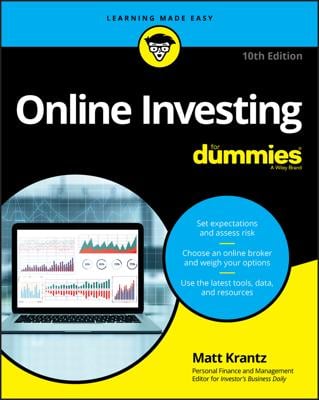Several regulatory pitfalls may cause you problems as you trade. You will want to avoid running afoul of these regulations. Otherwise, you risk having severe restrictions placed on your account.
Trade-settlement dates
In the United States, the Securities and Exchange Commission (SEC) regulates when traders must settle their securities transactions. Stock trades settle three business days after a trade is executed, meaning the buyer must pay for stock trades and the seller must deliver the stock within three business days after the trade is executed. Short sellers are subject to the same settlement regulations as everybody else.
Most securities, including broker-traded mutual funds and bonds, settle in this three-day cycle. The shorthand for this settlement period is known as T + 3, which means trade date plus three days. Stock options and government securities, on the other hand, settle the day following the trade date, or T + 1.
Your broker may insist that the money for all trades be available in your account before allowing you to execute any trades. Brokers can set stricter terms, but can’t set more lenient terms. Regardless of your broker’s restrictions, the trade settles during the period specified by SEC regulations.
One consequence of this settlement cycle is that your broker is unlikely to allow you to withdraw funds that are part of the trade until the trade settles. However, brokers typically do allow you to trade with those funds as if they are available as long as other trading regulations are not violated.
Avoid free riding
Whenever you choose to trade in a cash account, you must take care to avoid free riding. Free riding occurs whenever you buy and sell a stock without depositing sufficient funds before settlement to pay for the transaction.
One way that a trader may mistakenly violate the free-riding rules is trying to use the same capital on two transactions in a single day. Here’s the scenario: Say you have $10,000 of equity in your account and you buy 1,000 shares of a $10 stock.
Later that same day, you’re stopped out of the position. If you try to reenter the position on the same day, then you receive a money call for the full price of the second trade. That’s free riding. Note, however, that these trades are permitted in a margin account.
If you fail to satisfy the money call within the specified time, your broker either issues a warning or places your account on restricted status. When you’re restricted, you have to have enough funds in your account to cover your trade before the broker executes your order. Restrictions usually are imposed for 90 days.
Avoid margin calls and forced sales
A margin account enables you to borrow money from your broker, which, in turn, permits you to leverage your trading capital. This leverage can improve your total return when things go well, but it can also amplify any losses when a trade goes against you. A margin account is required if you plan to sell stock short.
Before using your margin, you must become familiar with the rules governing its use. The Federal Reserve determines the maximum amount that your broker can loan you. Currently, the Fed permits your broker to loan you up to 50 percent of the value of each trade. The Fed hasn’t changed the margin requirement values since 1974.
Margin fees
Your broker charges interest on the average daily margin balance, regardless of whether it’s cash or stocks. The margin balance is an adjustable rate loan for which the interest rate is based on the current broker call rate, which sometimes is known as the money call rate.
Brokers usually quote their respective margin rates as the broker call rate plus a percentage, where the added amount is dependent on the size of your loan.
Margin collateral
Your trading positions represent the collateral used to secure your margin loan. Brokers require the value of your collateral to be sufficient to cover any outstanding loan. The amount required by your broker, called the minimum maintenance margin, can range from 25 percent upward.
If the equity value of your account falls below the minimum maintenance margin, you receive a margin call, a demand to deposit more money in your account. If you fail to satisfy your broker’s demand, your broker liquidates some or all of your trading positions. Your broker may even liquidate your positions before you satisfy the margin call if the value of the equity in your account continues to fall.
When you open a margin account, you must sign a hypothecation agreement, a binding agreement that explicitly entitles your broker to liquidate positions to satisfy outstanding margin loans. This also permits your broker to loan any stock in your margin account to another client to provide shares for that client to short the stock.
If the stock you borrowed is sold to someone else, then your broker can call away your short position in a forced sale. Although forced sales like this don’t occur often, they nevertheless are a risk that you must assume if you short stock.
Avoid pattern-day-trader restrictions
Another risk you run when using a margin account is being classified as a pattern day trader. A day trade is defined as entering and exiting a single position in the same day. You can buy a stock and sell it, or you can short a stock and cover the position. Either way, if both transactions occur on the same day, it is considered a day trade.
If you day trade four or more times within a five-business-day period, you’re classified as a pattern day trader unless your day trades represent fewer than 6 percent of the total number of trades executed during the same period, which is a huge threshold. After you’re classified as a pattern day trader, your account must have at least $25,000 of equity before you’re permitted to execute additional day trades.

